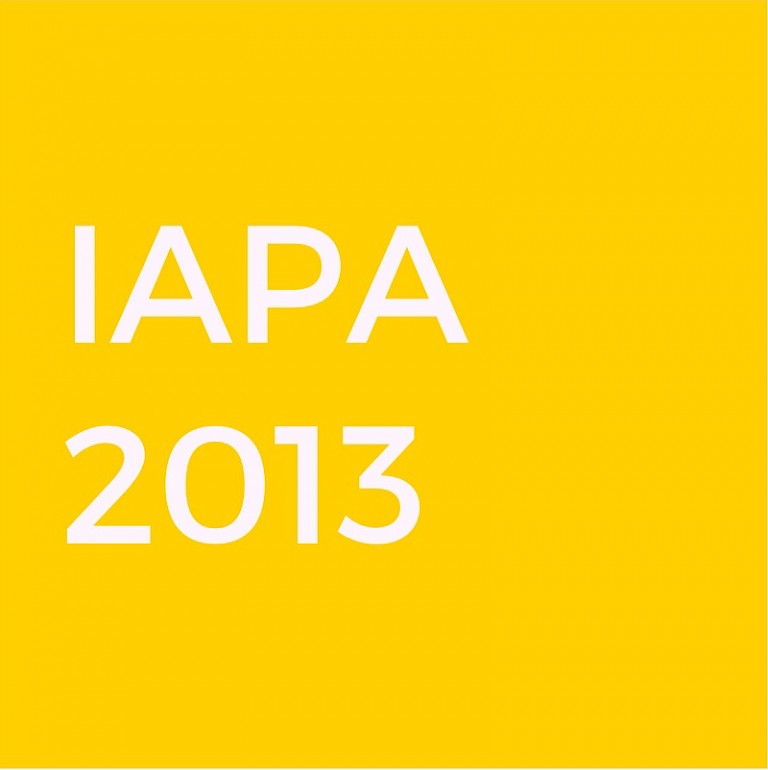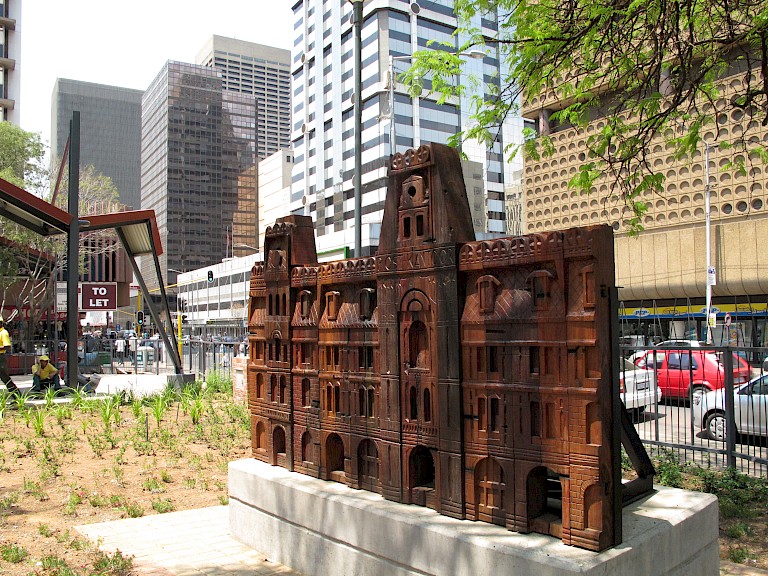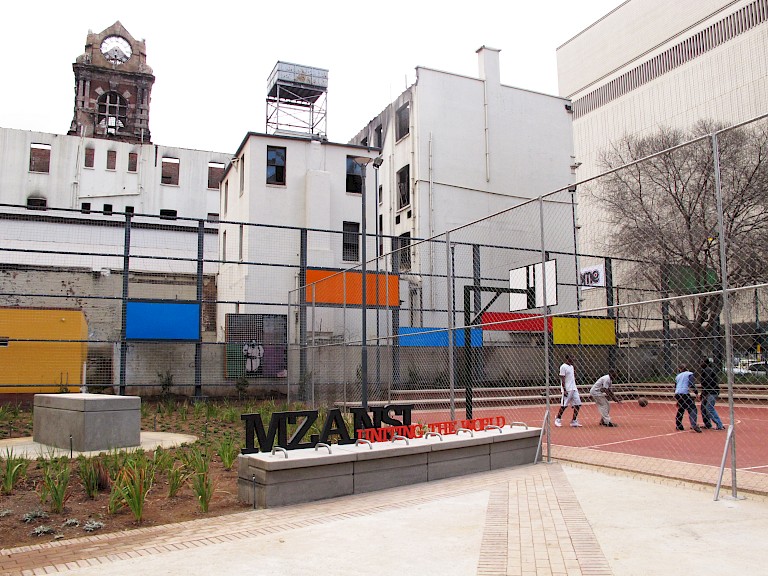The involvement of the local labor was an important part of the project. In fact in February 2010 the first concept developed by Trinity Session and The Library was rejected by the Johannesburg Development Agency, which oversaw selection. The JDA requested a new proposal based on new sculpture garden brief with highly labor intensive and hand crafted artwork specification.
Here are descriptions of the five main artworks.
- The historical revival of the park started with the Ernest Oppenheimer Diamond (a replica). This impressive sculpture was created in order to celebrate the life of Ernest Oppenheimer, a diamond and gold mining tycoon who controlled De Beers and founded Anglo-American. This sculpture presides over the Ernest Oppenheimer Park, which was relaunched in his honor by Executive Mayor Amos Masondo on 15 April. While many recall and continue to use this park, few know its name. Yet the Oppenheimer name is famous worldwide. The rough-cut diamond crystal is not the largest but is recognized as the most beautiful in the world. In a playful spirit, the 236-carat Ernest Oppenheimer diamond has been brought to life. It was 3D scanned by Mik Armour with the supplies of John Hatelberg in Washington, and scaled up 50 times to stand as a shining focal point of the park and central Johannesburg.
- The park was perhaps most famous in the 1980s for its water feature with leaping impala. After serious vandalism, the impala were relocated to Main Street opposite the headquarters of Anglo American. In remembrance of the famous sculpture, the artists made fourteen new Bokkies that have made their way back to the park and are found here grazing, resting and enjoying the new landscape.
- The City of Johannesburg has seen numerous buildings come and go during the process of reinventing itself. From this reflection started the development of two architectural interventions: The Standard Theatre and The Rissik Street Post Office, which were constructed from the photographs of the former facades.
The park was originally the site of the Standard Theatre, where early mining pioneers went to be entertained. The theatre brought much-needed light relief to the dusty gold diggers of the early 1900s. “In reference to Johannesburg’s continual progress expressed in the ever-present scaffold and construction cranes punctuating the skyline, contemporary steel bracing supports a spectral façade of early modern Johannesburg,” says Stephen Hobbs of The Trinity Session.
With a similar process the artists realized the facade of The Rissik Street Post Office, built in 1897. “It has undergone several revisions and has also been the victim of major fires. It will undergo yet another facelift when the City preserves its architectural heritage. Here construction rigging is used to support a façade of the Rissik Street Post Office that was never built and remains a blueprint in the City’s archive,” says Hobbs.
- Text Sculptures was designed to inspire park visitors. It includes the phrases EGOLI - YOU MAKE MY DREAMS COME TRUE, MZANSKI - UNITING THE WORLD, MJIPPA - YOU GIVE ME COURAGE and JOZI - NOTHING IS IMPOSSIBLE.
All copyright belongs to Shanghai Academy of Fine Arts, Shanghai University.







